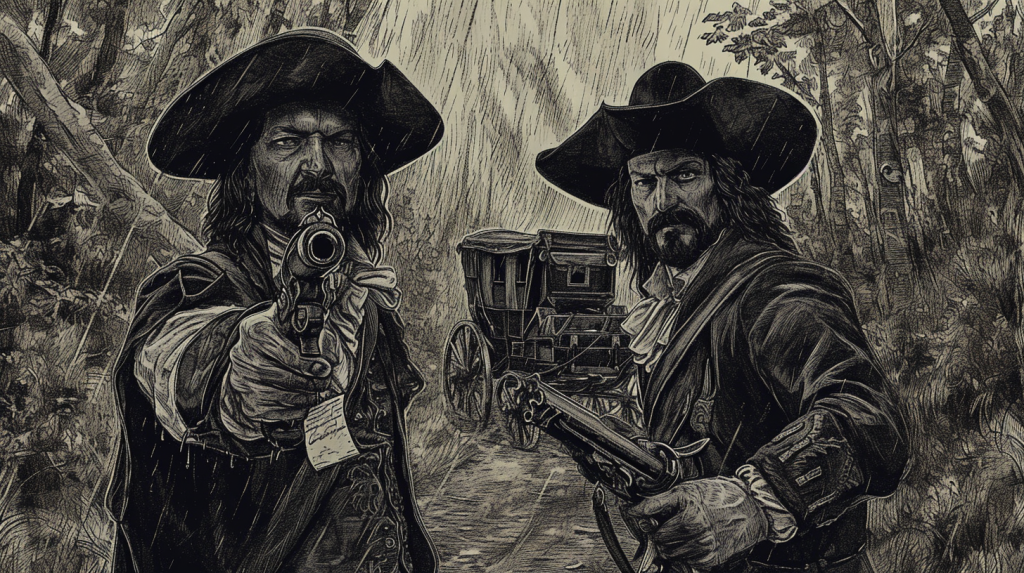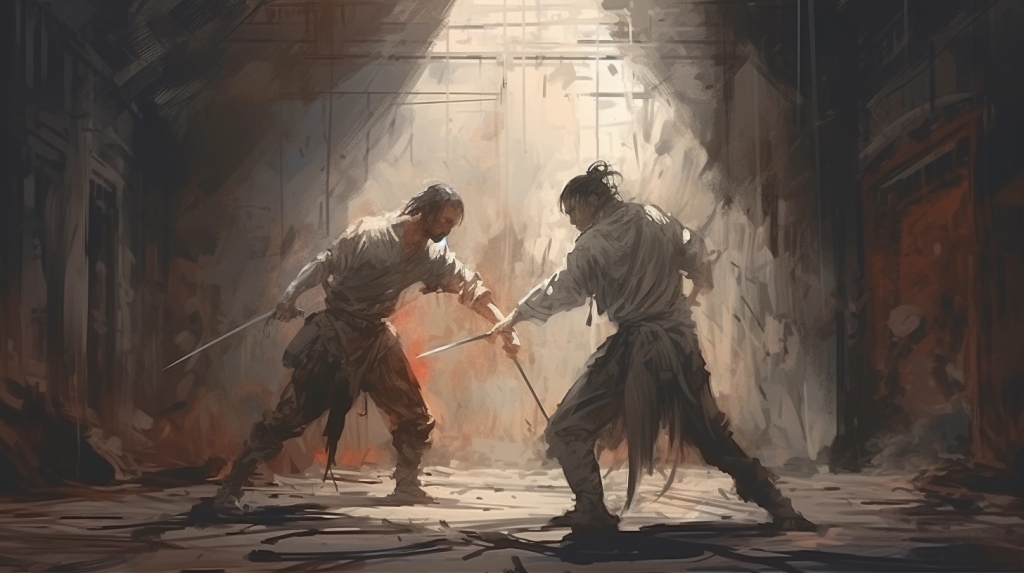One bugbear in WFRP is the clarity of explanations in the core book. Superficially the Rules As Written (RAW) seems fine until you start combining the text from many Talents and Skills, and also some of the situational modifiers. This post is all about who acts first, and how that might change with different circumstances. And then goes a little into changing the Fast Shot talent.

(aside – this is not a criticism of WFRP, as most games have issues with who acts first. I’ve written about the initiative and fast casting rules in Ars Magica on a number of occasions. Please take this post as a way to discuss unintended issues.)
As a basic premise, the Initiative Stat decides the order that characters act, the higher your stat the earlier you act. Makes good sense, and is one of the many reasons the I stat is valuable. The talent Combat Reflexes (WFRP core p.135, and is one of the best talents in the game) adds 10 each time it is taken to the characters Initiative order, but does not alter the basic stat.
e.g. five characters could be ordered as:
- a Protagonist, with I: 40 = order 40
- a Soldier, with I: 36 = order 36
- a Duelist A, with I: 34 = order 34
- a Duelist B, with I: 33 = order 33
- a Hunter, with I: 32 = order 32
In the above example the order is clear from the Protagonist first through to the Hunter last. Then as the characters develop by spending xp on skills stats and talents, several factors could potentially change the order.
- a Duelist A, with I: 34, using a weapon with the Fast quality = First.
- a Hunter, with I: 32, using the Fast Shot talent = First, as well??
- a Protagonist, with I: 40, and one rank of Combat Reflexes = order 50
- a Soldier, with I: 36 = order 36
- a Duelist B, with I: 33 = order 33
Now we have a dilemma – both the Fast weapon quality and the Fast Shot talent indicate the character acts outside of normal initiative; so who acts first? And consider the RAW to apply when resolving (a) two Fast weapons are used against each other, then the normal initiative takes precedence for those two combatants, and (b) the character with the higher number of Fast Shot talents goes first, and when the talent levels are equal they a simultaneous. Not great to have different ways to resolve conflicts.
Thankfully the Combat Reflexes talent is a good one, as it alters the order of initiative without introducing new special interrupts or first actions. This means the Soldier could advance their “I” stat, but is unlikely to catch-up to the Protagonist, who can buy a special talent.
YMMV but to me this indicates different approaches for resolving who attacks first, which might indicate that the Combat Reflexes talent is “stronger” than the weapon quality, and both are stronger than the base “I” stat. There is no clear rule on this in RAW though for Fast vs Fast Shot.
Rule Suggestion: To resolve this what-if scenario suggest that: the Fast weapon quality is considered equivalent to one level in a talent which grants a “act first” action, and that there should be one method for resolving all “act first” actions.
This means that Fast quality and Fast Shot (1) are “basically the same” initiative order, and then the characters “I” stat is then used to break any tie. If the I stat is equal then the actions happen simultaneously. That won’t happen often but does give a known mechanical way to say “it’s ok for these two things to happen at the same time”.
The probability of Fast Shot and the Fast quality being used in the same round is low anyway, but this makes it clear. This standardises the way to resolve any first/fast actions. It also keeps the benefit of buying the 2nd level talent to Fast Shot (2) which would exceed the Fast weapon quality, and given that investment of 300 xp, it seems reasonable.
The rationale for this is to make the use of any Fast talent or quality mechanically similar, and to also keep the value of increasing a character’s stats.
e.g.
- a Duelist A, with I: 34, using a weapon with the Fast quality = First, at 34.
- a Hunter, with I: 32, using the Fast Shot talent = First, at 32.
- a Protagonist, with I: 40, and one rank of Combat Reflexes = order 50.
- a Soldier, with I: 36 = order 36.
- a Duelist B, with I: 33 = order 33.
The Hunter could take an additional level of Fast Shot and move up the order, or also invest in their I stats to likewise react first. The Duelist B likewise could use a Fast weapon and move past the Soldier and Protagonist.
Alternate Simple Suggestion: the Talents are always faster. The core principal here is that while a weapon may have a quality that makes it quick, training (through spending xp) makes a person faster. It keeps the value of character choices higher than equipment.
Therefore in the order above the Hunter and the Duellist would switch positions of 1 and 2.
Side Discussion: Fast Shot needs to be changed! It’s a mess.
As written the talent Fast Shot seems to be allowing a shot in a subsequent round with little clarity on how that action works. It raises some confusing caveats for preloaded weapons, and not being able to move. For example it is not clear if Fast Shot can be used with different types of weapons, or if the weapons need to be in hand, or just on the characters body.
- Is a throwing knife in hand valid for Fast Shot? (Yes).
- Is there a penalty if a character is holding a pistol in each hand and fires one, and then wishes to switch hands the next round…is switching hands too slow? (Not in raw).
- Are bows excluded because they have no reload? (No, bows can use fast shot as normal).
- It’s not even clear to me when a player should declare they are using fast shot – because the group need to know but does the character have a normal action in round 1, and then declare they will be shooting quickly in round 2 at the end of everyone else’s turn?
- Instead suggest:
Fast Shot (Max Agi bonus), Test: any ranged attack using this talent.
You are a skilled marksman who is able to attack with lightning speed. At the start of any new turn you may choose to make an attack with a ranged weapon outside the normal initiative order. Roll to hit as normal for the ranged attack. The weapon must be ready to use, loaded (if required), and readily available. When using Fast Shot you forfeit your attack and move actions, but may defend as normal.
Aside Discussion: Drawing and Changing weapons.
There are no mods for speed or attack for changing weapons mid fight – we know drawing a weapon is a free action (pg 158), but there might be a bit of mechanics applied for groups who want more crunchy mechanics.
- Rule: Readying or changing weapons causes a -20 Initiative penalty. The character can still act, but they are less prepared than normal.
- Offset by gear: a bandoleer or special sheath or holster reduces this penalty by 10.
- Offset by talent: each level of Fast Hands reduces this penalty by 10.
At the start a fair duel both combatants would know not only the rules but would have time to be ready. Unfortunately many fights start with less favourable conditions and characters might be caught unprepared. A character who is caught without a weapon plausibly has a disadvantage, although they should be balanced against weapons which are typically worn to be used.
To represent this disadvantage without getting stuck too far into simulationist game mechanics – a character who is unarmed and is already within melee range at the start of a round either:
- Must defend with Dodge or Melee Unarmed (as normal), and/or
- If the character chooses to ready a weapon they suffer a -20 penalty to their initiative – as they forego part of their response speed to adjust for gaining the weapon. The weapon can then be used to defend.
- Drawing and readying a weapon in each hand is also possible, but increases the initiative penalty to -30.
As each combat round is meant to be a fluid and changing encounter this represents that the character can be seen preparing a weapon which an opponent would react to, but not necessarily be able to mitigate. Like normal the character can continue to use whichever defence to attacks they wish, such as Dodge, but may opt to forego speed for their preference.
Changing weapons is the same as drawing a weapon.
E.g. A cunning thief is armed with a dagger in their main hand and a throwing knife in their off hand has dispatched his last melee opponent, and now chooses to switch the throwing knife to his main hand. This invoked a -20 initiative penalty as the thief stows the dagger and changes the knife to his main hand.
Likewise a character brandishing two pistols might opt to fire one each round, but the second round they are slower due to switching hands.
Gear and talent explanations: Bandoleers, Lines, and Holsters were designed to keep weapons at hand. It is arguable if quick access equipment was really a thing in the old world, but it is flavoursome. There are references to pirates using pistols on lines so they could drop them without breaking or missing them.
Option: Delay.
A character may delay their action in a round until after somebody else does something, this does not forgo their action if it doesn’t occur, but allows them to wait.
E.g. a cutpurse assists his friend by throwing a weapon to her, but must wait till that friend is ready. The cutpurse’s action for the round is delayed.
Option: Overwatch.
A character may opt to watch a space and await the opportunity to strike or attack – this is similar to aiming. It must be plausible for the area to be covered by the pending action, and if so the character gains a +10 bonus to attack anything that enters that area.
E.g. a guardsman stands aside a doorway concealed, waiting his opportunity to strike against a cutpurse he suspects is robbing a manor house. The guardsman does not strike out against fellow guards as they patrol, but does gain a +10 to attack against the cutpurse when he moves cautiously through the door.
Happy gaming.





































































